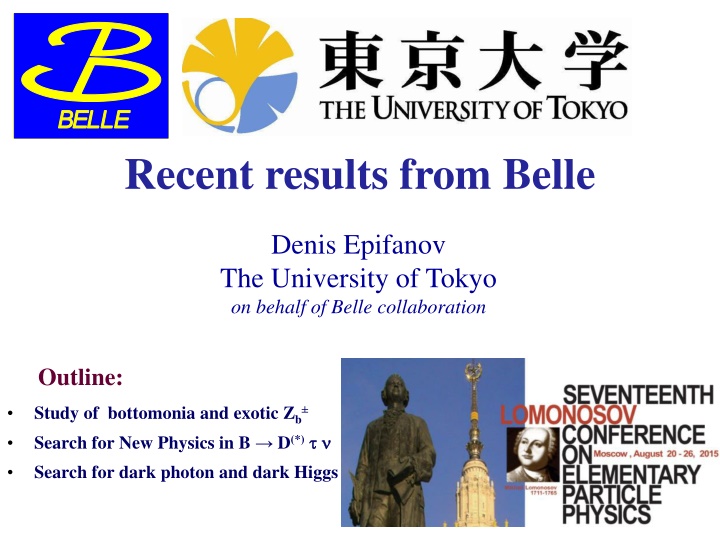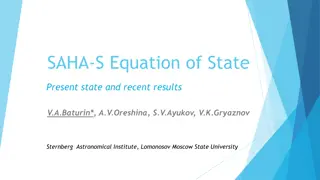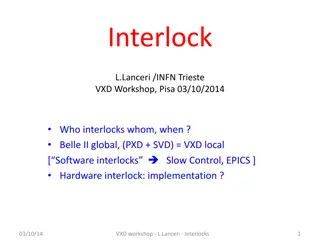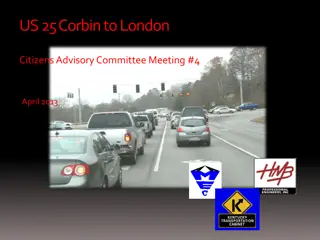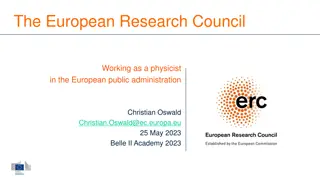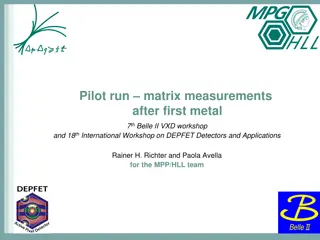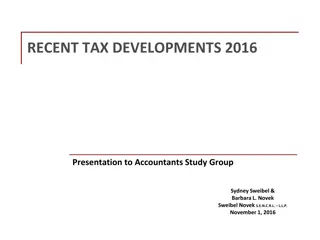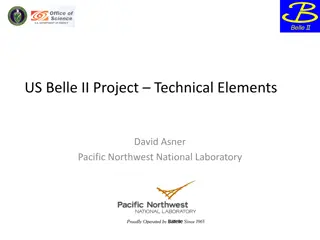Recent results from Belle
Results from BelleDenis Epifanov, University of Tokyo, reveal insights into bottomonia, exotic Zb, and searches for new physics in B.D. The study includes the search for dark photon and dark Higgs, anomalous rates in the region of 5S and 6S resonances, tetraquarks, and anomalies in transitions at 5S. Mass and width measurements provide valuable data for the field.
Download Presentation

Please find below an Image/Link to download the presentation.
The content on the website is provided AS IS for your information and personal use only. It may not be sold, licensed, or shared on other websites without obtaining consent from the author.If you encounter any issues during the download, it is possible that the publisher has removed the file from their server.
You are allowed to download the files provided on this website for personal or commercial use, subject to the condition that they are used lawfully. All files are the property of their respective owners.
The content on the website is provided AS IS for your information and personal use only. It may not be sold, licensed, or shared on other websites without obtaining consent from the author.
E N D
Presentation Transcript
Recent results from Belle Denis Epifanov The University of Tokyo on behalf of Belle collaboration Outline: Study of bottomonia and exotic Zb Search for New Physics in B D(*) Search for dark photon and dark Higgs
Study of (e+e-(nS)+-) and (e+e- ) in the region of (5S) and (6S) resonances Anomalous (5S) (nS) + - rates were previously observed at Belle. R = (e+e- (nS) + -)/ and Rb= (e+e- )/ were measured in the region of (5S) and (6S). Mass and width of (5S) were measured precisely. b b b b (MeV) PRL100,112001(2008) PRD82,091106R(2010) M = (9 4) MeV/c2 102 Rescattering (5S) BB (nS) (1) Simonov JETP Lett 87,147(2008); Meng et al. Phys.Rev.D78:034022,2008 (2) Exotic resonance Yb near (5S) analogue of Y(4260) resonance with anomalous (J/ + -) Hou et al., Phys.Rev.D74:017504,2006 Ali et al. Phys.Rev.Lett.104:162001,2010 9 30 pb-1 (3) Tetraquarks Karliner et al. arXiv:0802.0649v2; N. Brambilla et al, Eur.Phys.J. C71 (2011) 1534 3
Study of (e+e-(nS)+-) and (e+e- ) in the region of (5S) and (6S) resonances b b hep-ex :1501.01137 Data: 61 points / 50 pb-1; 5 MeV step Selections: 5 IP tracks, 2 ECL clusters ) ECL energy: (0.1 0.8) s, total energy > 0.5 s Efficiency:(70 74)% Rb large int. with continuum subtracted from cont. point (10.52 GeV) rad. return to (1 3S) Rb: w/ rad. return to (1 3S) Fit of Rb/R b: R b: w/o rad. return to (1 3S) Rb R b Uncontrollable systematic error of the resonance masses and widths due to large contribution from continuum with unknown shape 4
Study of (e+e-(nS)+-) and (e+e- ) in the region of (5S) and (6S) resonances b b hep-ex :1501.01137 Data: (16+6 ) points / 1 fb-1 Full reconstruction of (nS)[ + -] + - R Efficiency: (15 45)% Fit of R : Anr, Ar consistent with zero, fixed at zero M=(9.3 3.9) MeV/c2 M=(15.5 11.1) MeV/c2 No significant difference in (5S) parameters between Rb and R R is preferable for measuring masses and widths of (5S,6S) 5
Study of (e+e-hb(nP)+-) (n=1,2) in the region of (5S) and (6S) resonances Data: 121.4 fb-1 @ (5S) +19 points /1 fb-1 Selections: inclusive reconstruction in hb(1P) + - (2S) + - fit of hb(nP) signals in Mmiss( + -) Cross section: (ISR corr.) hb(2P) + - Fit of B(e+e- hb(nP) + -): phase space factor takes into account dynamics with Zb states Non-resonant continuum contribution is consistent with zero (5S) and (6S) parameters agree with those measured in (e+e- (nS) + -) 6
Anomalies in (5S) + transitions b b Belle: PRL100, 112001 (2008) ( (5S) (1S/2S/3S) + -) = 260/430/290 keV Belle: PRL108, 032001 (2012) ( (5S) hb(1P/2P) + -) = 190/330 keV (5S) hb(1P/2P) + - are not suppressed, although expect suppression QCD/mb dueto _ Rescattering of on-shell B(*)B(*) ? Study dynamics of (5S) + transitions: Belle: PRL108, 032001 (2012) Two charged bottomoniumlike resonances, Zb(10610) and Zb(10650), were observed in five decay channels, (nS) (n = 1, 2, 3) and hb(mP) (m = 1, 2) 7
Study of (5S)Zb Similar production rates of Zb(10610) and Zb(10650) in five decay channels (1S) + - (2S) + - (3S) + - hb(1P) + - Average over 5 channels Averages for Zb : M1 = 10607.2 2.0 MeV 1 = 18.4 2.4 MeV hb(2P) + - M2 = 10652.2 1.5 MeV 2 = 11.5 2.2 MeV Mmiss( ), GeV/c2 (2S) 0 0 Belle: PRD 88, 052016 (2013) M1-MB-MB* = (2.4 + 2.1) MeV/c2 M2-MB*-MB* = (1.8 + 1.8) MeV/c2 Zb0 Results: M1 = 10609 7 6 MeV consistent with Zb 8
Amplitude analysis of e+e-(nS)+- Belle: PRD91, 072003 (2015) L Lfit-L Lnominal for (2S) + - ( (3S) + -) 9
Evidence of (6S)Zb[hb] 3.4 4.7 Mmiss( + -) was fitted in bins of Mmiss( ) With present statistics we cannot conclude if both Zb(10610) and Zb(10650) states are produced at (6S), or only one of them. 10
Heavy quark spin structure in Zb A.B.,A.Garmash,A.Milstein,R.Mizuk,M.Voloshin PRD84 054010 (arXiv:1105.4473) Wave function at large distance molecule B(*)B*: 1 2 1 0 0 1 1 = ' Z b Qq bb bb Qq 2 1 1 0 0 1 1 = + Z b Qq bb bb Qq 2 2 Explains: Why hb is unsuppressed relative to Relative phase ~0 for and ~1800 for hb Production rates of Zb(10610) and Zb(10650)are similar Widths of Zb(10610) and Zb(10650)are similar Dominant decays to B(*)B* Other Possible Explanations Coupled channel resonances (I.V.Danilkin et al, arXiv:1106.1552) Cusp (D.Bugg Europhys.Lett.96 (2011),arXiv:1105.5492) Tetraquark (M.Karliner, H.Lipkin, arXiv:0802.0649) 11
Study of e+e-B(*)B(*) at (5S) Masses of the observed Zb resonances are close to the BB* and B*B* thresholds, respectively: branching fractions Zb B(*)B* might be large (dominant). Analysis strategy: B Full reconstruction of one B meson in eighteen modes: B+ J/ K(*)+, D(*)0 +; B0 J/ K(*)0, D(*)- + e+ e- B* 18 B decay modes combined _ B*B* _ B background _ B Signal 12263 168 B signal BB* BB B sidebands B(*)B(*) + BB qq background 12
Study of e+e-B(*)B(*) at (5S) Analysis strategy: Combine a B candidate with a charged pion from the rest of the event calculate recoil mass against the B system Data: M(B) sidebands RS data WS data RS data BB threshold rM(B ), GeV/c2 WS data Fit B(*)B(*) signal MC B*B B*B* rM(B ), GeV/c2 rM(B ), GeV/c2 N(BB ) = 13 25 N(BB* ) = 357 30 N(B*B* ) = 161 21 (e+e- BB* ) were measured (e+e- BB ) (e+e- B*B* ) 13
Study of e+e-B(*)B(*) at (5S) Analysis strategy: For events from 3-body sig. region recoil mass against primary background B*B* 8.1 BB* Zb(10610) only Zb(10610) + NR 9.3 Zb(10610) + Zb(10650) background Zb(10650) only rM( ), GeV/c2 rM( ), GeV/c2 BB* and B*B* data fits well to just Zb(10610) and Zb(10650) signal, respectively Assuming Zb decays are saturated by observed channels already B(*)B* channels dominate the Zb decays 14
Summary on Zb(10610) and Zb(10650) Zb are very close to BB* and B*B* thresholds Their quantum numbers are: IG,JPC = 1+,1+(-) They are observed both in the hidden-bottom modes ( (1S/2S/3S) and hb(1P/2P) ) and in the open-bottom modes (BB*, B*B*) at (5S) resonance We found an evidence of Zb(10610) and Zb(10650) states in decays (6S) Zb[ hb(1P/2P) ] BB*/B*B* modes dominate in Zb decays with the branching ratios 83%/71% Energy behaviour of (e+e- (nS) + -) and (e+e- hb(nP) + -) are similar Zb properties agree well with B(*)B* molecular structure 15
Search for New Physics in BD(*) Process with third generation quarks and leptons In models with charged Higgs bosons their couplings are proportional to lepton mass, hence NP effects are enhanced for New physics could change: Branching fraction Tau polarization Effect could be different for D and D* Confirm BaBar result: PRL 109 101802 (2012), PRD 88 072012 (2013) Experimental challenge: 2 (hadronic decay) or 3 (leptonic decay) undetected neutrinos 16
Search for New Physics in BD(*) arXiv: 1507.03233 Statistics: 772 106 BB pairs Selections: Btag is reconstructed using hadronic full reconstruction algorithm, which includes 1149 B final states (rec. efficiency 0.3% for B+ and 0.2% for B0). Additional requirements on the purity of Btagsample preserves 85% of signal B D(*) decays is reconstructed in the leptonic decays e , , so the signal and normalization modes have the same final particles reduces systematic uncertainty of R(*) In the events with Btag we select D(*) (D+ -, D0 -, D*+ -, D*0 -), = e or among remaining tracks and clusters: D+ K- + +, K0S +, K0S + 0, K0S + + -; D*+ D0 +, D+ 0; D0 K- +, K- + + -, K- + 0, K0S 0, K0S + -; D*0 D0 0, D0 ; (-0.2 < M2miss < 8.0) GeV2/c4 M2miss = (Pbeam PBtag PD(*) - P )2/c2; q2 > 4 GeV2/c4 q2 = (PB PD(*))2; 17
Search for New Physics in BD(*) M2miss rangeis split into two regions: 1) M2miss < 0.85 GeV2/c4: populated by events of B D(*)e , D(*) 2) M2miss > 0.85 GeV2/c4: enriched by B D(*) ( e , ) To constrain B D(*)e , D(*) yields M2miss in fitted in the region 1), while neural-network output ONB is fitted in region 2) . D+ - D*+ - D0 - D*0 - 18
Search for New Physics in BD(*) The fit was repeated with the PDF generated from 2HDM type II MC with tan /MH = 0.5 c2/GeV: R(D) = 0.329 0.060 0.022; R(D)2HDM = 0.590 0.125; R(D*) = 0.301 0.039 0.015; R(D*)2HDM = 0.241 0.007. Belle result compatible with 2HDM type II model in the region around tan /MH = 0.5 c2/GeV 19
Search for dark photon and dark Higgs boson Belle: PRL 114, 211801 (2015) Dark photon A and dark Higgs boson h are introduced in the Dark Sector Models, with kinetic mixing ( ) between A and SM,andA coupling to h ( D). One of the promising A and h production channels at e+ e- colliders is Higgs -strahlung: e+ e- A h a) mh < mA : h A *A * B. Batell et al., Phys. Rev. D 79, 115008 (2009) b) mA < mh < 2mA : h A A * c) mh > 2mA : h A A At Belle we searched for e+ e- A h [ A A ], A e+e-, + -, + - in 10 exclusive final states: 3(e+e-), 3( + -), 3( + -), 2(e+e-)( + -), 2(e+e)( + -), 2( + -)(e+e-), 2( + -)( + -), 2( + -)(e+e-), 2( + -)( + -), (e+e-)( + -)( + -) 0.1 GeV/c2 < mA < 3.5 GeV/c2 0.2 GeV/c2 < mh < 10.5 GeV/c2 in 3 inclusive final states: 2(e+e-)X, 2( + -)X, (e+e-)( + -)X 1.1 GeV/c2 < mA < 3.5 GeV/c2 2.2 GeV/c2 < mh < 10.5 GeV/c2 20
Search for dark photon and dark Higgs boson Data: 977 fb-1 Selections: m1A > m2A > m3A analysis in bins of m1A divide m1A - m3A into signal and sideband regions same-sign events were used to evaluate background in the signal region Number of observed events Efficiency: (20 30)% 21
Search for dark photon and dark Higgs boson 90%CL upper limits on the product D 2 BaBar: PRL 108 211801 (2014) No significant signal is observed 22
Summary b b Cross sections of the reactions e+e- (nS) + -, e+e- hb(nP) + - and e+e- have been measured in the region of (5S) and (6S) resonances. Energy behaviour of the (e+e- (nS) + -) and (e+e- hb(nP) + -) is similar. Masses and widths of (5S,6S) were measured precisely, they agree with the previous measurements. We found an evidence of (6S) Zb[ hb ] . BB*/B*B* modes dominate in Zb decays with the branching ratios 83%/71%, Zb properties agree well with B(*)B* molecular structure. B D(*) have been studied at Belle , our result on R and R* agrees with both SM expectation and BaBar result. It is also consistent with 2HDM type II model in the region around tan /MH = 0.5 c2/GeV No significant signal was found for dark photon and dark Higgs, 90% CL upper limits on the product D 2 were obtained. 23
